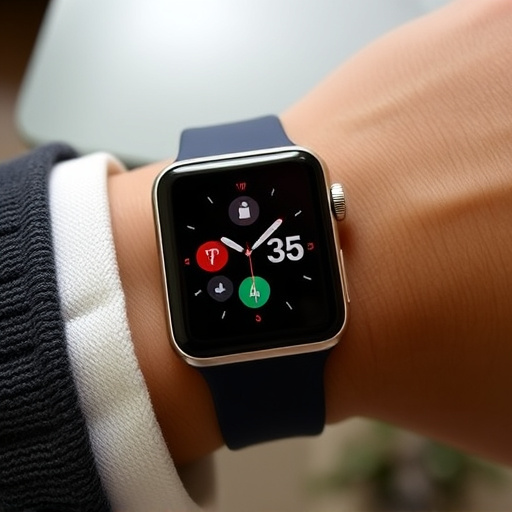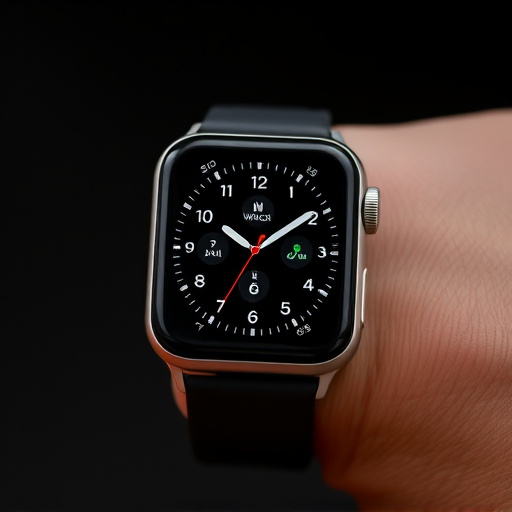The Apple Watch's battery life varies by model and usage, degrading over time. Monitor battery health through the Watch app. Look for signs like rapid draining or frequent charging. Replace the battery using specialized tools and clean contact points. Maximize battery life with mindful app use, balanced temp, and watchOS updates. Consider replacement if performance issues persist.
Looking to extend your Apple Watch’s battery life? This guide is your solution. We’ll demystify Apple Watch battery care, offering insights on understanding its lifespan and maximizing performance. Learn crucial tips for identifying when it’s time to replace your Apple Watch battery and master the step-by-step process for a seamless swap. Discover expert advice on maintaining optimal battery health for a longer-lasting experience.
- Understanding Apple Watch Battery Life
- When to Replace Your Apple Watch Battery
- Steps for Replacing an Apple Watch Battery
- Maximizing Battery Health Tips
Understanding Apple Watch Battery Life

The battery life of your Apple Watch is a crucial factor for its daily usability. Understanding how it functions and what impacts its longevity is essential. Unlike traditional watches, the Apple Watch is designed with an integrated rechargeable battery that requires proper care to maintain optimal performance. Several factors influence the watch’s battery life, including the model of your Apple Watch, usage patterns, network connectivity, and the brightness of the display. For instance, continuous use of GPS or heavy app activity can drain the battery faster than regular timekeeping and basic notifications.
Regularly checking your watch’s battery health and adjusting usage habits accordingly is key. Apple provides tools within the Watch app on your iPhone to monitor battery performance. If you notice a significant decrease in battery life or frequent need for charging, it might be time to consider replacing the apple watch battery to ensure uninterrupted use.
When to Replace Your Apple Watch Battery

Knowing when to replace your Apple Watch battery is crucial for maintaining optimal performance and ensuring uninterrupted use. While the longevity of the battery depends on various factors, including usage patterns and model, it generally degrades over time. As a general rule, consider replacing your Apple Watch battery if you notice significant reductions in battery life, such as needing to charge it twice as often or experiencing rapid draining during regular activities.
Keep an eye out for signs like a screen that dimms more quickly than usual, frequent freezing or performance issues, and noticeable decreases in the time between charges. If your watch struggles to hold a charge for even a few hours after being fully charged, it might be a clear indication that the battery is reaching the end of its lifespan and should be replaced promptly.
Steps for Replacing an Apple Watch Battery

Replacing your Apple Watch’s battery is a straightforward process, but it requires some precision and care. First, power down your watch completely by going into the watch’s settings and selecting “Power Saving Mode.” This ensures that no processes are running in the background during the replacement.
Next, remove the original battery by unscrewing the back case with a specialized tool or a thin, flathead screwdriver. Be gentle as you pry it open to avoid damaging the watch. Once the case is off, you’ll access the battery, which is secured in place with adhesive. Carefully peel away the old battery and clean the contact points inside the watch with isopropyl alcohol to ensure optimal adhesion for the new battery. Insert the new battery, ensuring it aligns correctly, then reattach the back case securely.
Maximizing Battery Health Tips

To maximize your Apple Watch’s battery health, start by being mindful of app usage and frequent checks. Regularly reviewing notifications and constantly using third-party apps can drain the battery quickly. Opt for more intuitive notification settings and prioritize built-in Apple apps to conserve power. Additionally, enable ‘Power Saving Mode’ during low-key periods to extend battery life significantly.
When it comes to maintaining optimal performance, consider the watch’s temperature and avoid extreme conditions. Extreme heat or cold can negatively impact the battery’s longevity. Keep your Apple Watch in a balanced environment, away from direct sunlight or freezing temperatures. Regularly updating the watchOS is also crucial; new updates often include enhancements for energy efficiency. Lastly, if you notice consistent performance issues or a rapid decline in battery life, it might be time to consider replacing your Apple Watch battery.
In conclusion, maximizing your Apple Watch’s battery life is essential for staying connected and active throughout the day. By understanding your device’s power needs, knowing when to replace the battery, and implementing practical tips for maintaining its health, you can ensure a longer-lasting experience with your Apple Watch. Remember that regular care and attention will help you avoid unexpected shutdowns and keep your watch running smoothly, so take these insights and begin optimizing your battery life today—including considering when it might be time to replace your Apple Watch battery.
